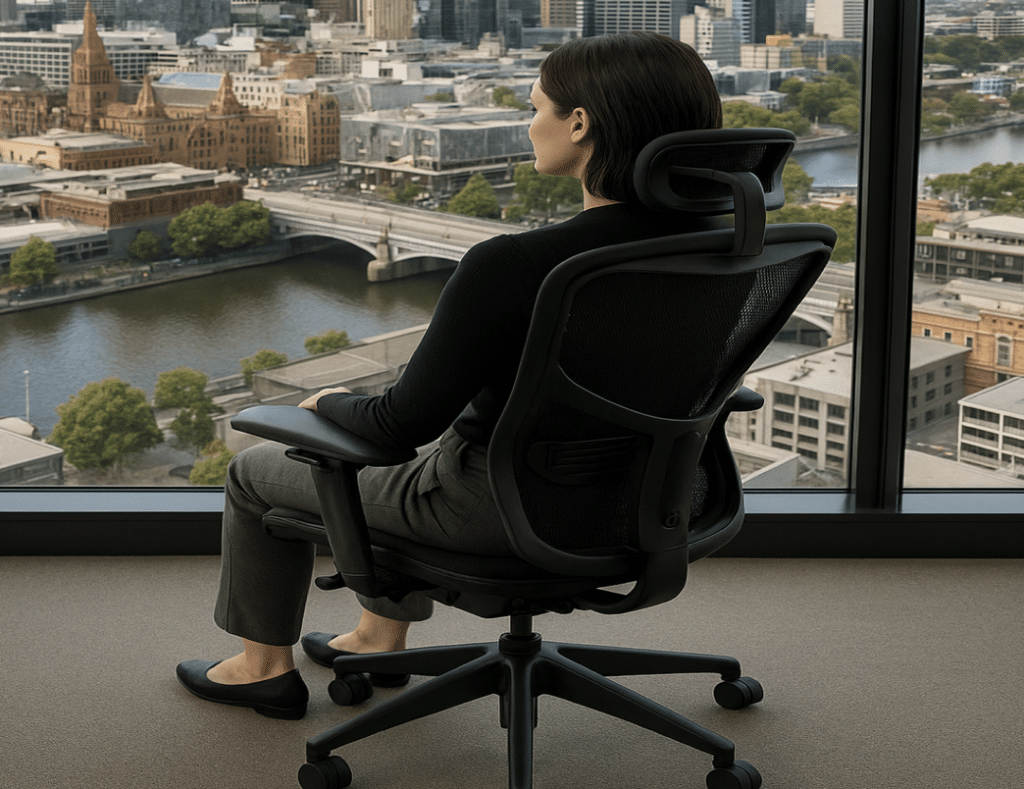As Australia’s workplace landscape continues to evolve, the emphasis on employee wellbeing and efficiency is stronger than ever. From home offices in Hobart to government buildings in Canberra and education hubs in Melbourne, professionals are recognising that workplace ergonomics is not just a buzzword—it’s a strategic advantage.
Investing in ergonomic design isn’t about trends. It’s about creating workspaces that reduce injury risk, increase focus, and elevate overall job satisfaction. Whether you’re managing a small business, overseeing procurement in a government agency, or outfitting a school, thoughtful office design can drive both performance and wellbeing. For those considering upgrades, resources like Australian office fitout solutions offer a tailored starting point.
Understanding Ergonomics in Today’s Work Culture
Ergonomics involves tailoring furniture and equipment to fit the user’s needs. In practical terms, this means adjusting chairs, desks, screens, and even lighting to reduce discomfort and strain.
The benefits go beyond comfort. Research by Safe Work Australia links poor posture and static work habits to long-term musculoskeletal issues. These issues can lead to decreased productivity, absenteeism, and costly compensation claims.
Ergonomics at Work: What Really Matters?
1. Seating That Supports Long Days
For desk-bound professionals, a well-designed chair can make or break the workday. Quality ergonomic task chairs are designed to accommodate a wide range of postures and tasks. They support the lumbar region, reduce pressure on the thighs, and offer adjustable features for customisation.
Employees using such seating report fewer back complaints and increased alertness—two key performance drivers.
2. Desk Flexibility with Sit-Stand Options
Standing desks are more than a wellness trend. They allow professionals to shift positions throughout the day, easing lower back tension and improving blood flow.
This is especially beneficial for remote workers who may not move as often as those in traditional office spaces.
3. Monitor and Keyboard Positioning
Proper screen and input device placement can reduce eye strain, neck tension, and carpal tunnel syndrome. The top of the screen should be level with the eyes and at arm’s length. Keyboards and mice should allow the arms to rest at a comfortable 90-degree angle.
Small ergonomic accessories, like risers and wrist supports, can drastically improve these setups.
4. Lighting and Environment Design
Natural lighting improves mood and decreases fatigue. Where possible, workspaces should incorporate window exposure and daylight-mimicking lamps. Equally, reducing glare and ensuring screen brightness matches ambient light can protect eyesight over time.
Complement lighting with decluttered environments. When physical space is organised, mental clarity often follows.
Benefits for Business, Government, and Education
Businesses: Increase Performance and Retention
Australian businesses—particularly SMEs—stand to benefit significantly from ergonomic investments. Staff who feel physically supported are less likely to burn out or take sick leave. Productivity rises, and recruitment efforts are supported by improved workplace reputation.
Government: Lead Through Best Practice
Government offices are expected to model compliance and wellness standards. Ergonomic upgrades demonstrate duty of care, create inclusive spaces for staff with varied needs, and ensure long-term cost efficiency through fewer health-related absences.
Education: Empower Staff and Students
Teachers and administrative staff often face long hours at desks or in front of screens. Ergonomic furniture allows them to stay focused and energetic throughout the day. In universities, ergonomic lecture halls and labs also set students up for lifelong healthy habits.
What Small Teams and Remote Workers Should Prioritise
Smaller teams and remote professionals might not have big fit-out budgets, but they can still make key ergonomic adjustments:
- Use stackable books to raise laptop screens
- Invest in a mid-range ergonomic chair
- Alternate between seated and standing positions using makeshift risers
- Schedule hourly stretch breaks to counteract poor posture
With even modest adjustments, remote teams can protect their health and maintain their productivity at home.
Procurement Guidance: Making Smart Ergonomic Choices
When selecting furniture or advising on office fit-outs, procurement professionals should:
- Choose products with proven ergonomic certifications
- Prioritise adjustability to accommodate varied users
- Look for materials that offer breathability and support
- Review warranties and durability ratings, especially for high-use settings
One smart starting point is reviewing a curated collection of ergonomic chairs built for Australian work environments. These options are purposefully designed to meet modern posture and comfort standards.
Long-Term Benefits of Ergonomic Investment
The payoff of ergonomic planning compounds over time:
- Healthier teams: Reduced repetitive strain injuries and posture issues
- Higher morale: Staff who feel valued are more engaged
- Better collaboration: Comfortable settings foster better communication
- Brand image boost: Thoughtfully designed workspaces reflect positively on culture and leadership
Ergonomics isn’t just a facility issue—it’s a leadership choice that supports people at every level.
Final Thoughts: Australia’s Ergonomic Advantage
As Australian organisations strive to retain top talent, meet compliance standards, and support hybrid work, ergonomic design becomes a differentiator. Whether your workspace is large or lean, investing in physical wellbeing shows a commitment to people—and pays dividends in performance.
This isn’t about luxury chairs or premium finishes. It’s about functionality, flexibility, and future-proofing. The ergonomic edge is within reach—one chair, one desk, one smart choice at a time.
